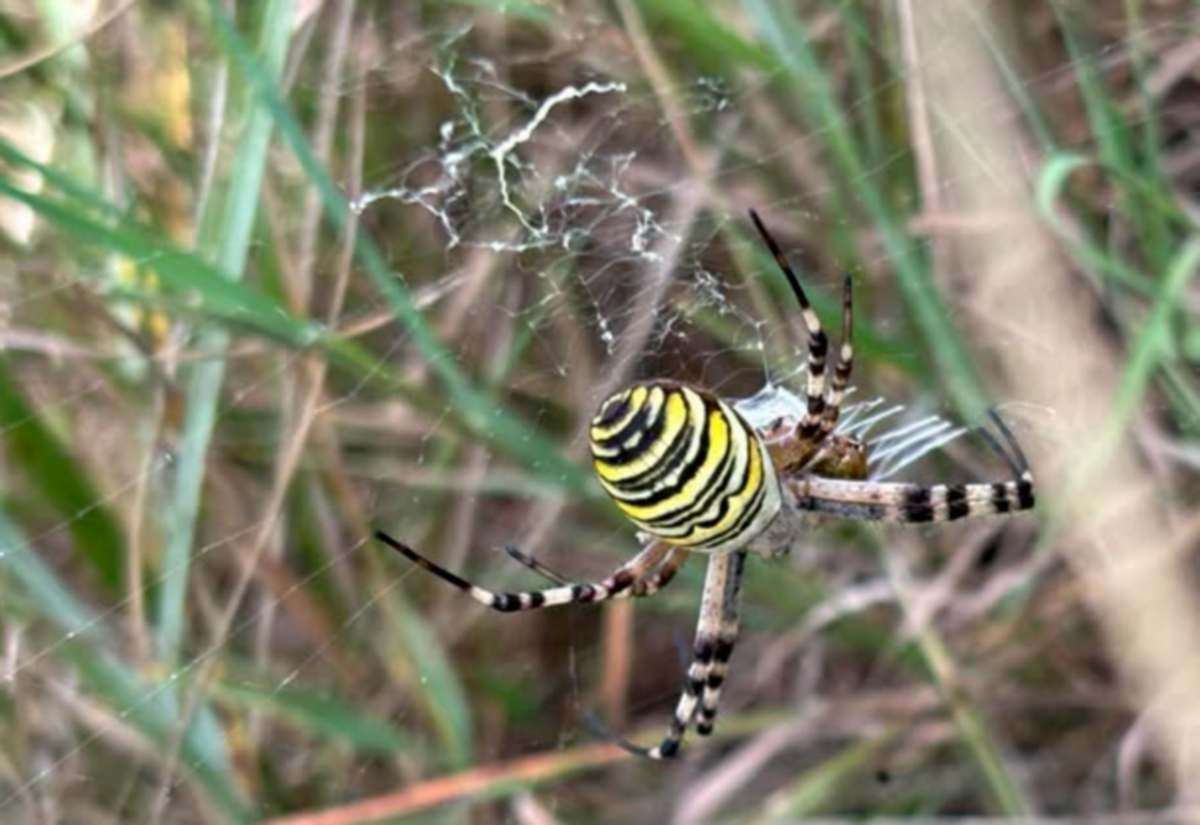If you’re scared of both wasps and spiders, a new arachnid has made itself home in Lincolnshire… and maybe even your nightmares.
Meet the wasp spider.
Female wasp spider in the wild. Image: RSPB Freiston Shore
A new arrival to the southeast of England around 100 years ago and rarely seen this far north, rangers spotted the distinctive yellow, cream and black abdomen of a female on the northern bank of RSPB Freiston Shore near Boston on Friday.
“They were confined to the southeast until the mid 2000’s when warmer weather led them to start expanding their range,” Chris Andrew, the visitor experience manager at nearby RSPB Frampton Marsh, told LincsOnline.
“The ones at Freiston are on the outer limits of the population, with only scattered individuals beyond that.
“This is in common with a number of other species, including one of their prey, the Roesel’s Bush Cricket, which has undergone a very similar expansion of its range.
“Global warming is the most likely answer as to why they have spread.”
The Wildlife Trust describes female wasp spiders as “very large”, and rather than feasting on small insects as common house and garden spiders do, they concentrate their efforts on snaring crickets, grasshoppers – and their mates.
The male wasp spider is much smaller, between one-quarter and one-third the size of females, and do not have the same vivid patterning.
As well as rare spiders, the prolonged hot and dry weather has seen an explosion in numbers of wasps and butterflies, although it has had a knock-on effect for Freiston’s army of wading birds.
“Some of the wet grassland we have at Freiston has gone very dry to a lack of rainfall, and we’re having similar effects over here at Frampton,” Chris said.
“This obviously affects the wading birds, who want to look for food in the soft mud at the water’s edge.
“However, Freiston does have the two lagoons whose water is replenished by the tides.
“So, in fact, we think a lot of the birds that have been displaced by dry conditions elsewhere have been coming to Freiston to feed.”
Those incomers join a colony of small egrets who now nest in the trees on the reserve, which became part of the RSPB in 2002 after former farmland was allowed to flood and become brackish marsh.
Chris is also keen for kids and the young at heart to get stuck into finding invertebrates: “We have hireable bug hunting packs, plus also pond dipping, and other fun summer activities. But also get out into the garden or the local park.
“Things like i-SPY books are quite reasonably priced and can provide hours of fun for kids trying to tick off that elusive last critter.
“For adults, we often have reserve guides out on the reserve here at Frampton always happy to help even the newest person to birdwatching.”

